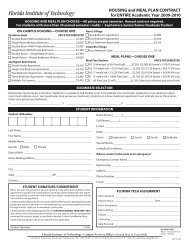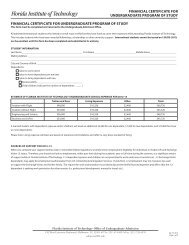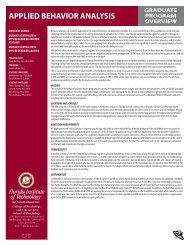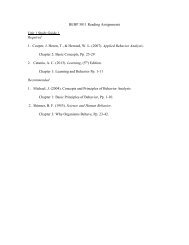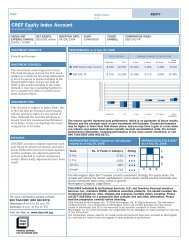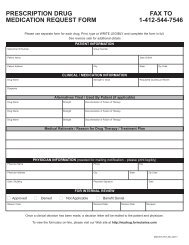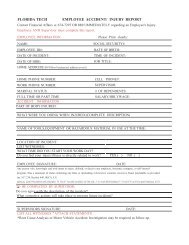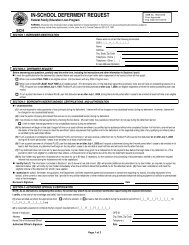BEHP 5001 - Florida Institute of Technology
BEHP 5001 - Florida Institute of Technology
BEHP 5001 - Florida Institute of Technology
Create successful ePaper yourself
Turn your PDF publications into a flip-book with our unique Google optimized e-Paper software.
(1) The total “behavioral assessment & selecting intervention outcomes strategies" requirement<br />
and for certification as a BCaBA ® .<br />
(2) The total “experimental evaluation <strong>of</strong> interventions; measurement <strong>of</strong> behavior and displaying<br />
& interpreting data” requirement for certification as a BCABA ® .<br />
In addition, the class fulfills:<br />
(3) Part <strong>of</strong> the “behavioral assessment & selecting intervention outcomes strategies;”<br />
(4) Half <strong>of</strong> the “experimental evaluation <strong>of</strong> interventions” requirement for certification as a<br />
BCBA ® ; and<br />
(5) Half <strong>of</strong> the “measurement <strong>of</strong> behavior & displaying and interpreting data” requirement for<br />
certification as a BCBA ® .<br />
NOTE: “CA” = Content Area from the BACB ® Behavior Analyst Task List © (BACB, 2005)<br />
NOTE: Other courses in our BACB-approved Course Sequences fulfill the additional<br />
instructional requirements needed for certification in behavior analysis for both types <strong>of</strong><br />
credentials.<br />
Tasks from BACB®’s Behavior Analyst Task List©<br />
Covered in <strong>BEHP</strong> <strong>5001</strong><br />
#<br />
CONTENT AREA 4: BEHAVIORAL ASSESSMENT<br />
TASK<br />
4-1 State the primary characteristics <strong>of</strong> and rationale for conducting a descriptive assessment.<br />
4-2 Gather descriptive data.<br />
a. Select various methods.<br />
b. Use various methods.<br />
4-3 Organize and interpret descriptive data.<br />
a. Select various methods.<br />
b. Use various methods.<br />
4-4<br />
State the primary characteristics <strong>of</strong> and rationale for conducting a functional analysis as a<br />
form <strong>of</strong> assessment.<br />
4-5 Conduct functional analyses.<br />
a. Select various methods.<br />
b. Use various methods.<br />
4-6 Organize and interpret functional analysis data.<br />
a. Select various methods.<br />
b. Use various methods.<br />
CONTENT AREA 5: EXPERIMENTAL EVALUATION OF INTERVENTIONS<br />
# TASK<br />
5-1 Systematically manipulate independent variables to analyze their effects on treatment.<br />
a. Use withdrawal designs.<br />
b. Use reversal designs.<br />
c.<br />
Use alternating treatments (i.e., multi-element, simultaneous treatment, multiple or<br />
concurrent schedule) designs.<br />
d. Use changing criterion design.<br />
e. Use multiple baseline designs.<br />
5-2<br />
Identify and address practical and ethical considerations in using various experimental<br />
designs.<br />
5-3<br />
Conduct a component analysis (i.e., determining effective component(s) <strong>of</strong> an intervention<br />
package).<br />
5-4<br />
Conduct a parametric analysis (i.e., determining effective parametric values <strong>of</strong><br />
consequences, such as duration or magnitude).<br />
CONTENT AREA 6: MEASUREMENT OF BEHAVIOR<br />
# TASK<br />
<strong>BEHP</strong> <strong>5001</strong> – Syllabus –April 2012 (rev 03/123/12KM)– Copyright J. Martinez-Diaz & ABA Technologies, Inc. – All rights reserved<br />
6



